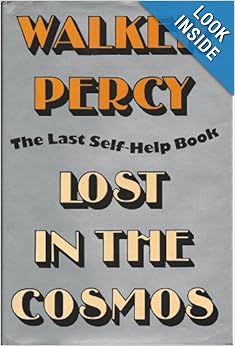 Victor Hugo’s epic novel is divided into five volumes:
Victor Hugo’s epic novel is divided into five volumes:
Volume 1: Fantine
Volume 2: Cosette
Volume 3: Marius
Volume 4: Saint-Denis
Volume 5: Jean Valjean
In January I read, or rather re-read, the first two volumes, but I’m sort of stuck. I first read the entire novel when I was in college. This reading was back in the Dark Ages, before the stage musical, before any movie versions that I was aware of, certainly before the most recent movie musical version starring Hugh Jackman and Anne Hathaway. I didn’t know what would happen to Cosette, Marius, and Jean Valjean. This burning desire to know how the story would turn out explains why I stayed up until two in the morning once upon a college dorm room, reading Les Miserables even though I had an eight o’clock class that same morning. I had to finish; I had to know.
Now I already know. And although I am enjoying my re-read thirty-plus years later, I no longer have the suspense pulling at me to finish the novel. So, I’m not sure when I will get the motivation to go ahead and read the rest, but here are a few observations on the first two parts.
The first part of Book 1, like the first part of the musical, actually focuses on Monseigneur Bienvenu, the Bishop of M., who first shows Jean Valjean what grace and mercy look like.
Of M. Bienvenu: “He did not study God; he was dazzled by Him.” Brown Bear Daughter thinks the good bishop is too good to be true, but I have met people who, having put their past behind them (and it is implied that M. Bienvenue may have a past of some sort), are veritable saints.
However, Jean Valjean does not immediately become good after his life-changing encounter with the bishop. Even after he is shown mercy, in the book Valjean robs a child on the road, out of habit(?) or dullness or ingrained hopelessness. He only sees himself in his own sin after this shameful act that cannot be excused by “the law is too harsh” or “I had to help my sister and her children by stealing a loaf of bread.” When Valjean sees himself in all his wickedness, then he is given even more grace to go ahead and “become an honest man,” sort of, or at least a useful and respectable man.
Fantine is another character who is more multi-dimensional in the novel than in the musical/movie. She is certainly “more sinned against”, abandoned by Cosette’s father, cheated by the Thenardiers, and driven into debt, prostitution, and slavery by her situation. However, she also nurses hatred and pride in her heart as she thinks of how she lost her factory job and as she continues on to a life of prostitution instead of appealing to M. Madeleine to give her job back. And she, like Valjean, needs and receives redemption and mercy.
Part 2 does introduce us to Cosette, and we watch her grow into a young lady as Jean Valjean grows in his ability to love and to sacrifice himself for another. He becomes Cosette’s true father.
Girl Detective enjoyed reading all 1231 pages of Les Miserables, but she complains, as do most people, about the long digressions and says the book begs to be abridged. I understand and have some sympathy for the abridgment position, especially when it comes to the name-dropping, political sections when Tholomyes and later Marius and his friends talk about people and political situations that we latter-day readers have never heard of and don’t need or want to know about. The political/historical parts where Hugo writes about people who add no value to the story are skippable. But the sewer and the cloister chapters are actually quite interesting to me anyway, and they set a tone for the setting of the story that I think makes it richer and more intense. (Not sure those are the right adjectives? Maybe “deep†or “vividâ€.) Yeah, you can skip those and the whole battle of Waterloo, except the part where Thenardier rescues somebody, and the argot chapter and it’s OK, but I would argue that at the least there is good writing (essay and historical writing) there, too.
If the digressions bore you, skip them or get an abridged version. If you’re like me and you enjoy ponderous chapters full of information about arcane subjects, chapters that interrupt the action but do something that I can’t put my finger on exactly for the tone and development of the story, then go ahead and read them. I can’t say that you miss anything, really, by skipping, or that there is any virtue in being able to say you’ve read the entire, unabridged version. Just read it in some version. My favorite novel ever.
By the way, I loved the movie, except for the one part with Santa and various other vulgar vignettes in the Thenardiers’ inn, a scene which begged to be abridged, cut, censored and never even thought up in the first place. Drunken Santa Claus, at least, makes no appearance in Victor Hugo’s novel.
Novel Views: Les Miserables by Jeff Clark. These charts and graphs are fascinating. Did you know that, other than character names, some of the most common words used in Les Miserables are: bishop, love, mother, child, gamin, Paris, old, right, war, barricade, sewer, man, day, street, city, wall, door? And each character has characteristic verbs that are used to describe his/her actions.
Jean Valjean fell, condemned, concealed, stood, robbed, slept, caught.
Fantine coughed, sighed, sang, shared.
Cosette gazed, grew, developed, fetched, noticed, woke, loved.
Marius lived, fixed, paid, launched, fell, reflected, heard.
Javert pinioned, killed, permitted, bound, hunted, recognized, yielded.
Thenardier screamed, unmasked, growled, shook, lied, cast, thrust.
Gavroche muttered, sang, scratched, climbed, shrugged, pushed.
Emotional Detachment and Les Miserables by Michael Sacasas at Mere Orthodoxy. This article asks if some critics of the new movie and of the story itself are disturbed by “having been brought dangerously near the edge of feeling again what had been assiduously suppressed by reflexively deployed irony or cynicism.”
Les Miserables book study at the blog Mommy Life. Barbara Curtis, the blogger at Mommy Life has gone on to be with the Lord, but her blog lives on in cyberspace. Her comments and thoghts on Hugo’s opus are full of insight and Christian theology.
Magistramater gives us some quotations from Volume 1 and from Volume 2.
Amy’s rambling thoughts on Les Miserables at Hope Is the Word.
I started this blog post a couple of weeks ago, and now I think I’m about ready to get back to Les Miserables and finish it. I’ll try to check in again when I’ve finished Volume Three, Marius.








